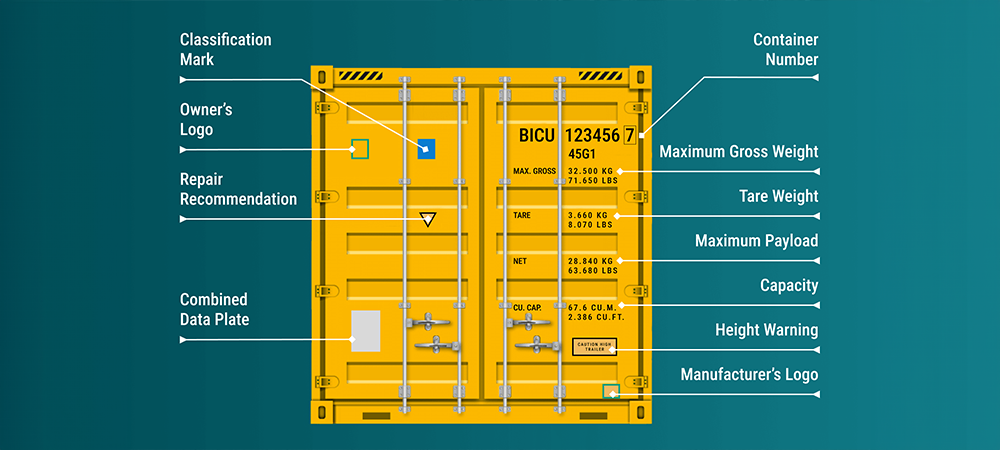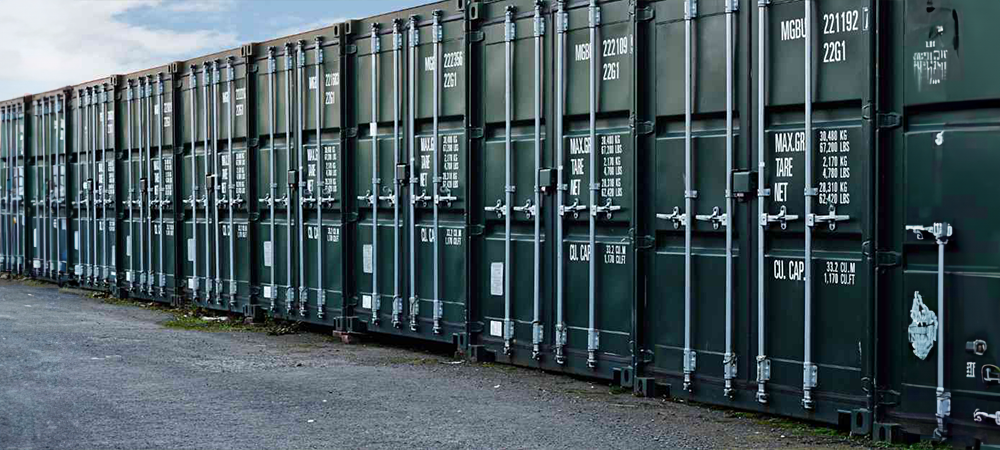Shipping Container Numbers and Markings Explained
A breakdown of all numbers and letters on a shipping container.
The doors of a shipping container are typically covered with various numbers and letters. Each marking provides important information about the transportation, cargo, ownership, and condition of the storage container. Let’s look at the meaning of each marking.
(1) Container Number – A unique sequence made up of 4 letters and 7 numbers, the container number is displayed on the top right part of the container door. The classification agency ISO ( International Standards Organization) assigns the number to identify the unit internationally. The first 3 capital letters are the Owner Code, which signifies the owner of the container, who also usually brands the unit with their logo and unique paint. One letter following the owner code, the Equipment Category Identifier is either U, J or Z. U denotes a freight container, J refers to attached container related equipment such as a power unit, and Z signifies a trailer or chassis used to carry a storage container. Next, the Registration Number (or Serial Number) is a sequence of 6 digits, decided by the owner.

The (2) Check Digit is the following solo number, the last digit of the container number. This is used to verify the entire identification sequence is accurate. If you search the container number with the BIC (Bureau of International Containers), the matching check digit should appear.
(3) ISO Code – Usually located below the container number, the ISO Code is a sequence of 4 letters or digits that provide information about the container dimensions and type of container. The first character signifies the length of the unit and the second character represents the width and height. The third character identifies the container type and the last character indicates a container of reduced strength. Depending on the country, a container is labeled Dry Van (DV), General Purpose (GP), Standard (SD), or Dry Container (DC).
(4) Operational Markings – Operational characteristics of the container are often displayed on the door. The Maximum Gross Weight signifies the most weight the loaded container can carry, which is typically around 30 metric tons. The Container Weight (Tare) also appears, which should be between 4 to 10 metric tons. The Net or Payload is the gross weight minus the tare weight, which is the maximum weight that can be packed into the container. The Maximum Cargo Volume is also displayed below.

(5) CSC Plate – Typically located in the lower left of a unit’s doors, every shipping container used for international transport needs a valid CSC plate to verify good condition and acceptable safety.
Container Technology is a member of the Container Alliance Partnership offering portable storage containers for sale as well as shipping containers for rent across north America, for more information visit ContainerAlliance.








